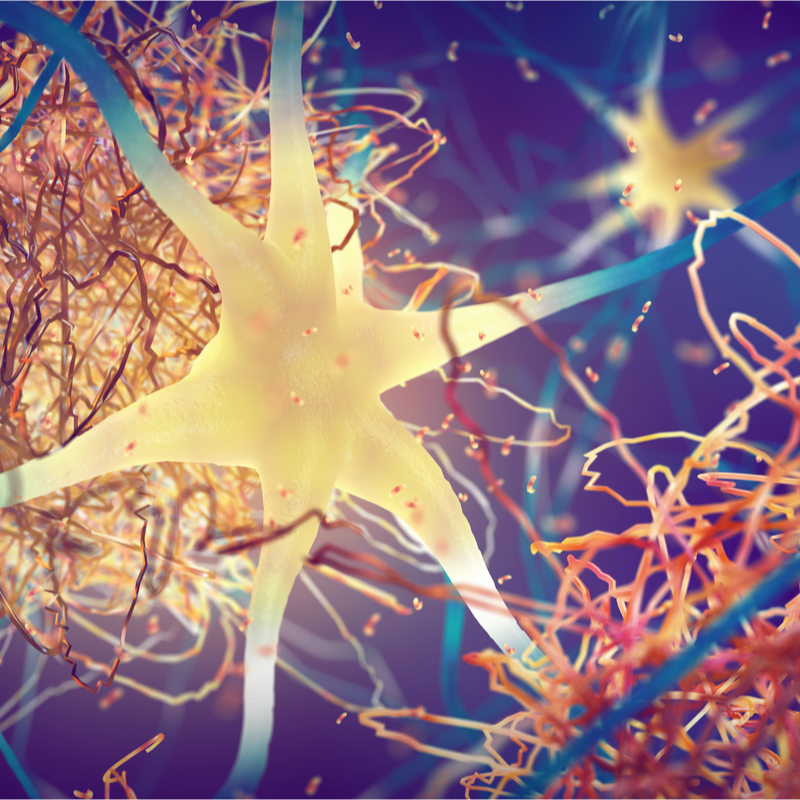
What is a paraganglioma?
A paraganglioma is a very rare form of tumour that can affect the sympathetic or parasympathetic nervous system. The tumour usually forms from a hormonally active cluster of nerve cells called the paraganglion. In addition to the hormone noradrenaline, this nerve cell cluster also produces dopamine. In 35 to 40 percent of all cases, paragangliomas are malignant and tend to metastasise.
In which parts of the body does a paraganglioma prefer to form?
A paraganglioma can form in the following parts of the body and is therefore divided into the different forms of a paraganglioma :
- in the area of the base of the skull (glomus jugulare): The so-called paraganglioma jugulare develops primarily in the area of the lateral skull base.
- in the middle ear (glomus tympanicum): The so-called paraganglioma tympanicum arises from a ganglioma in the middle ear, is characterised by many vessels and is usually benign. As it grows, the tumour can destroy neighbouring tissue .
- in the neck area, especially in the carotid artery (carotis): The so-called paraganglioma caroticum develops in the so-called carotid triangle, the place where the carotid artery branches into the outer and inner carotid artery. This type of tumour is usually benign. However, it often occurs in simultaneous development of malignant paragangliomas in the abdominal area .
- on the aorta: The so-called Paraganglioma aorticum usually grows quickly and carries a high risk if it is not treated early.
- (Usually malignant) paraganglioma in the chest and abdomen, which can occur together with a paraganglioma caroticum.
How does a paraganglioma develop?
A paraganglioma usually occurs as a single tumour. It is rather rare for a paraganglioma to form in several places, as is the case with paraganglioma caroticum . If this is the case, the paraganglioma is often caused by genetic factors.
What causes a paraganglioma to develop?
So far the causes of paraganglioma are still largely unexplained. Since they can occur in different parts of the body, it is often difficult to identify only one cause. If several paragangliomas occur, this is usually due to different familial syndromes or previous genetic diseases, such as a germline mutation.
What symptoms are caused by a paraganglioma?
The symptoms of a paraganglioma always depend on the exact site of origin. In most cases, however, a paraganglioma does not cause any symptoms at all for a long time. Only with increasing size can symptoms occur due to the impairment of the surrounding tissue. Depending on its location, the following symptoms can develop :
- Paraganglioma in the middle ear: in addition to a pulse-synchronous ringing in the ear (tinnitus), it can also cause hearing loss up to and including deafness and/or a feeling of dizziness ,
- Paraganglioma at the carotid bifurcation in the area of the skull base or neck: can cause difficulty swallowing and hoarseness, a pulsating swelling in the neck area, a drooping upper eyelid and/or ringing in the ears,
- Paraganglioma in the chest and abdominal area: can make itself felt through pain.
If
the tumour also secretes hormones, the following additional
symptoms may occur due to the
hormone secretion of noradrenaline and dopamine:
- High blood pressure,
- severe hypertensive crises,
- Heart palpitations (tachycardia),
- Sweating,
- Headaches,
- Anxiety,
- Tremors,
- Nausea,
- Drop in blood pressure (orthostatic hypotension),
- Weakness and/or pallor,
- unwanted weight loss,
- Diabetes mellitus.
How can a paraganglioma be diagnosed?
Since a paraganglioma, depending on the site of origin, secretes a hormone secretion , it can be diagnosed by laboratory detection of this . If there is a paraganglioma that does not produce any hormones, it can be diagnosed by the usual imaging procedures . This may involve a computed tomography (CT) scan of the thoracic area or a magnetic resonance imaging (MRI) scan of the head and neck and/or abdominal area.
How is a paraganglioma treated?
The first choice of treatment for a paraganglioma is surgical removal of the tumour, if this is possible . In order to avoid severe blood pressure abnormalities during the operation, which can be caused by hormone secretions, the patient should undergo a so-called alpha blockade with the drug Dibenzyran for at least ten days prior to the operation. Since the surgical intervention, especially in the head and neck region, is difficult due to the risk of possible nerve damage, a slowly growing paraganglioma can also only be monitored medically at first. Regular control examinations should determine the tumour growth . Radiation therapy is also a conceivable alternative to an operation. In this case, the aim is always to destroy the paraganglioma as completely as possible.
If, on the other hand, the tumour is already metastasised, systematic therapies can be used. This includes, for example, the so-called radionuclide therapy, chemotherapy or molecularly targeted treatments. As a paraganglioma is a rather rare form of tumour, it is important that various experts in oncology, endocrinology (so-called hormone specialists) as well as radio-oncologists, nuclear medicine specialists, surgeons, gastroenterologists and pathologists are consulted for the treatment in order to guarantee the best possible treatment.
What is the prognosis for paraganglioma?
The prognosis of a paraganglioma depends on several factors. In addition to the question of whether the tumour is malignant or benign also depends on the size of the tumour and its location. In any case, a malignant tumour should be treated as quickly as possible . However, it should also be noted that benign tumours can destroy the surrounding tissue through their growth and the tumour can, at least theoretically, form metastases and thus become malignant. The earlier the tumour is diagnosed and treated, the better the chances of cure.
